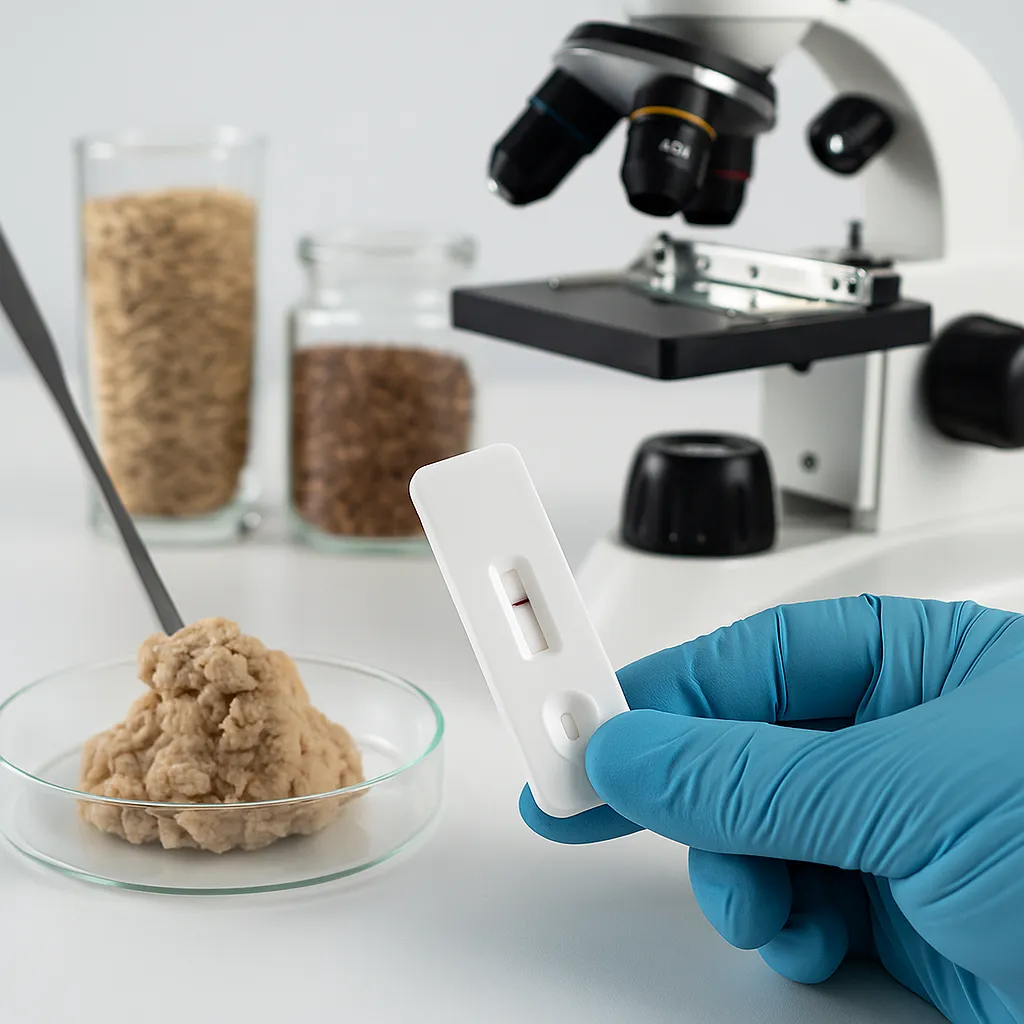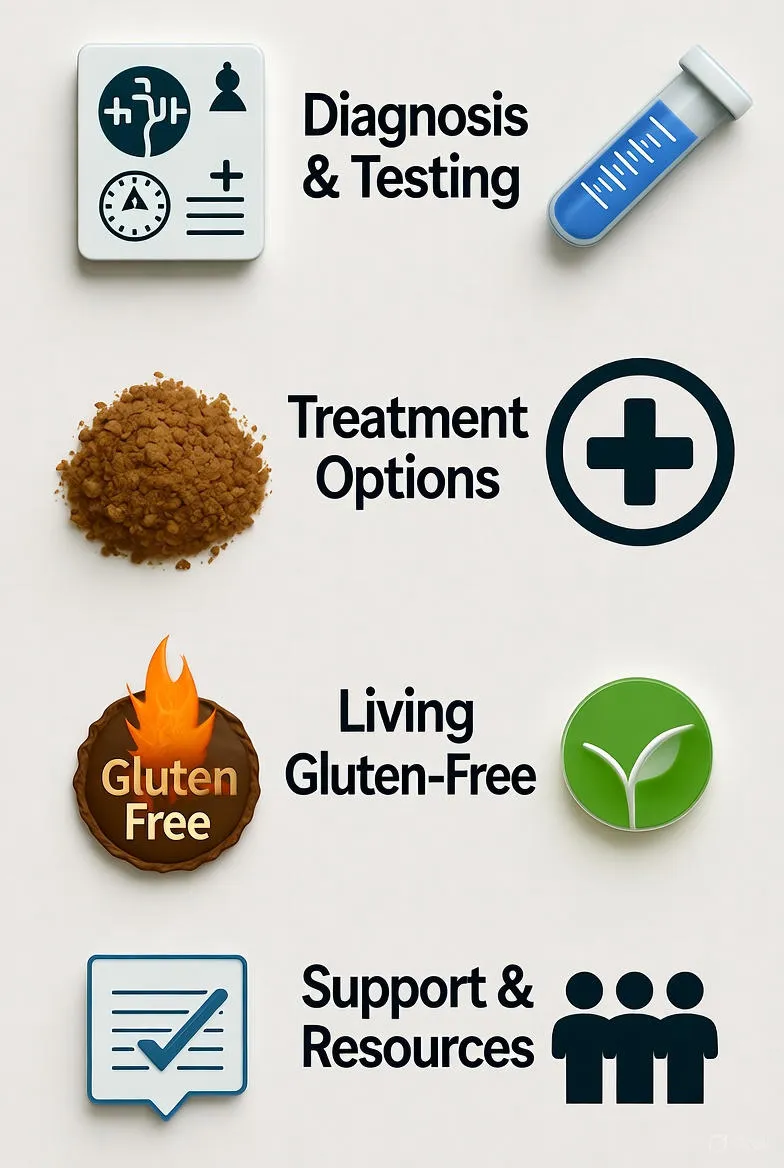Testing Gluten Levels in Food: Methods, Importance, and Challenges
Discover how gluten levels in food are tested, why accurate detection matters, and which modern techniques ensure food safety for people with celiac disease or gluten intolerance.

For individuals with celiac disease, gluten sensitivity, or those who choose a gluten-free diet, ensuring that food is free from gluten contamination is of vital importance. Testing gluten levels in food is not only a scientific process but also a public health necessity. As awareness of gluten-related disorders grows globally, so does the need for reliable, standardized methods to detect even the smallest traces of gluten in food products. This article explores how gluten testing works, why it matters, and the challenges manufacturers and laboratories face when measuring gluten accurately.
What Is Gluten and Why Does It Matter?
Gluten is a group of proteins found primarily in wheat, barley, and rye. These proteins—gliadin and glutenin—provide elasticity and structure to baked goods, giving them their chewy texture. However, for some individuals, consuming gluten can cause serious health issues. In celiac disease, an autoimmune disorder, the ingestion of gluten triggers an immune response that damages the small intestine, leading to malabsorption and a range of symptoms. Even trace amounts of gluten can cause harm to those affected, making accurate testing essential.
Why Testing Gluten Levels Is Crucial
Gluten testing plays a pivotal role in ensuring the safety and trustworthiness of gluten-free labeled foods. Regulations in many regions, such as those by the Food and Drug Administration (FDA) and the European Commission, require that foods labeled “gluten-free” contain less than 20 parts per million (ppm) of gluten. This threshold is based on scientific evidence suggesting that most individuals with celiac disease can tolerate minimal traces below this level without adverse effects.
For Consumers
For consumers, accurate gluten testing ensures confidence in food labeling and dietary safety. Gluten cross-contamination can occur at any stage—from harvesting and processing to packaging and cooking—so testing is the only way to verify claims of gluten-free purity.
For Manufacturers
For food producers, gluten testing helps maintain brand integrity and compliance with international food safety standards. Even a small lapse in testing or contamination control can lead to costly recalls, legal actions, and loss of consumer trust. Regular and thorough gluten testing reduces these risks significantly.
Common Methods of Testing Gluten in Food
Several testing methods are used to measure gluten levels, each with its strengths, limitations, and ideal use cases. Below are the most common and reliable techniques used globally:
1. ELISA (Enzyme-Linked Immunosorbent Assay)
The ELISA test is the most widely used and validated method for detecting gluten. It relies on antibodies that specifically bind to gluten proteins, allowing for precise quantification. ELISA kits come in different forms, including the R5 ELISA, which is recognized internationally as the reference method for gluten testing. This method can detect gluten concentrations as low as 5 ppm, making it suitable for both raw ingredients and processed foods.
2. Lateral Flow Devices (LFDs)
Also known as rapid test strips, LFDs offer a quick and easy way to test gluten presence. Similar to home pregnancy tests, these kits use immunochromatographic techniques to give results within minutes. While not as precise as ELISA tests, they are ideal for on-site checks, restaurant kitchens, and food manufacturing lines for immediate detection of contamination risks.
3. PCR (Polymerase Chain Reaction)
The PCR method detects gluten by identifying specific DNA sequences from gluten-containing cereals. This molecular technique is highly sensitive and can even differentiate between wheat, barley, and rye contamination. However, PCR tests require specialized laboratory equipment and expertise, making them less practical for routine industry use.
4. Mass Spectrometry
Mass spectrometry, though complex and costly, is gaining attention for its accuracy and ability to detect gluten peptides at extremely low levels. It provides an advanced analytical profile of food components and can complement other methods for verification purposes.
Challenges in Gluten Testing
Despite advances in technology, gluten testing still faces significant challenges. One major issue is the complexity of food matrices. Processed foods often contain multiple ingredients that can interfere with test accuracy. Heating, fermentation, and enzymatic processes may also break down gluten proteins, making them harder to detect. Another challenge is ensuring standardization across testing kits, as different assays may yield slightly different results for the same sample.
Cross-Contamination Risks
Even facilities that do not directly process gluten-containing grains can experience cross-contamination through shared equipment, air, or storage containers. Therefore, consistent testing, good manufacturing practices (GMP), and strict segregation are critical for maintaining gluten-free integrity.
Validation and Calibration
Another challenge lies in validating test results across laboratories and ensuring that all testing instruments are properly calibrated. International standards and proficiency testing programs help laboratories maintain consistency and reliability in gluten measurement.
Regulatory Standards for Gluten Testing
Globally, food safety authorities have implemented standards and labeling rules to protect gluten-sensitive individuals. The Codex Alimentarius defines gluten-free foods as those containing less than 20 ppm of gluten. Similar thresholds are used by the FDA in the United States and the European Food Safety Authority (EFSA) in Europe. Manufacturers must validate their processes and testing routines to meet these standards.
Best Practices for Accurate Gluten Detection
- Use validated ELISA kits that are approved by regulatory agencies.
- Test at multiple production stages—from raw ingredients to final packaging.
- Train staff on allergen management and testing protocols.
- Implement strict sanitation procedures to prevent cross-contamination.
- Conduct third-party audits and external laboratory verifications.
Future of Gluten Testing
As food technology evolves, gluten detection is becoming more precise, faster, and user-friendly. Portable testing devices and AI-assisted analysis are being developed to provide real-time monitoring and improved accuracy. The goal is to ensure absolute confidence in gluten-free labeling and to support safer consumption for everyone affected by gluten intolerance or celiac disease.
Conclusion
Testing gluten levels in food is an indispensable aspect of modern food production, ensuring both consumer safety and regulatory compliance. From advanced ELISA methods to emerging technologies, gluten testing continues to evolve in accuracy and efficiency. For individuals with gluten-related disorders, these efforts translate into safer, more trustworthy products—and a better quality of life.


